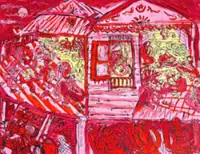Nik Marhammah (right) is happy to share her knowledge in kelingkan to craft enthusiasts like Siti. Photos: The Star/Sheela Chandran
Siti Nurul Liyana Mohamud, 22, was in a jovial mood after receiving her certificate in kelingkan, a traditional Malay embroidery, under The Silver Lining Project (TSLP), organised by the Malaysian Craft Council and co-funded by Khazanah Nasional’s Yayasan Hasanah and the Finance Ministry in Kuala Lumpur recently.
Together with her four workshop coursemates, Siti eagerly posed for selfies and wefies with their teacher, Nik Marhammah Nik Megat, 50.
Already a subscriber? Log in
Save 30% OFF The Star Digital Access
Cancel anytime. Ad-free. Unlimited access with perks.





